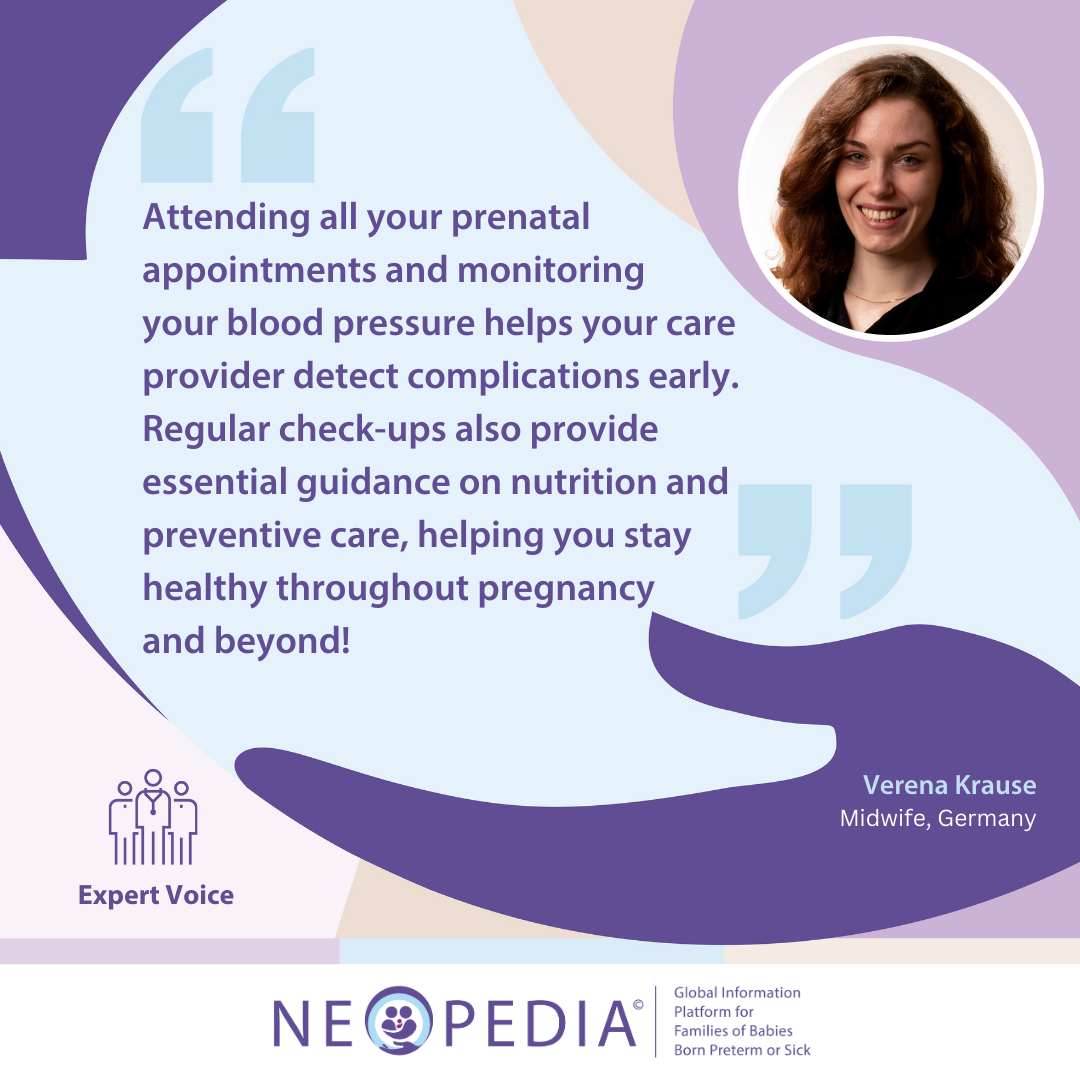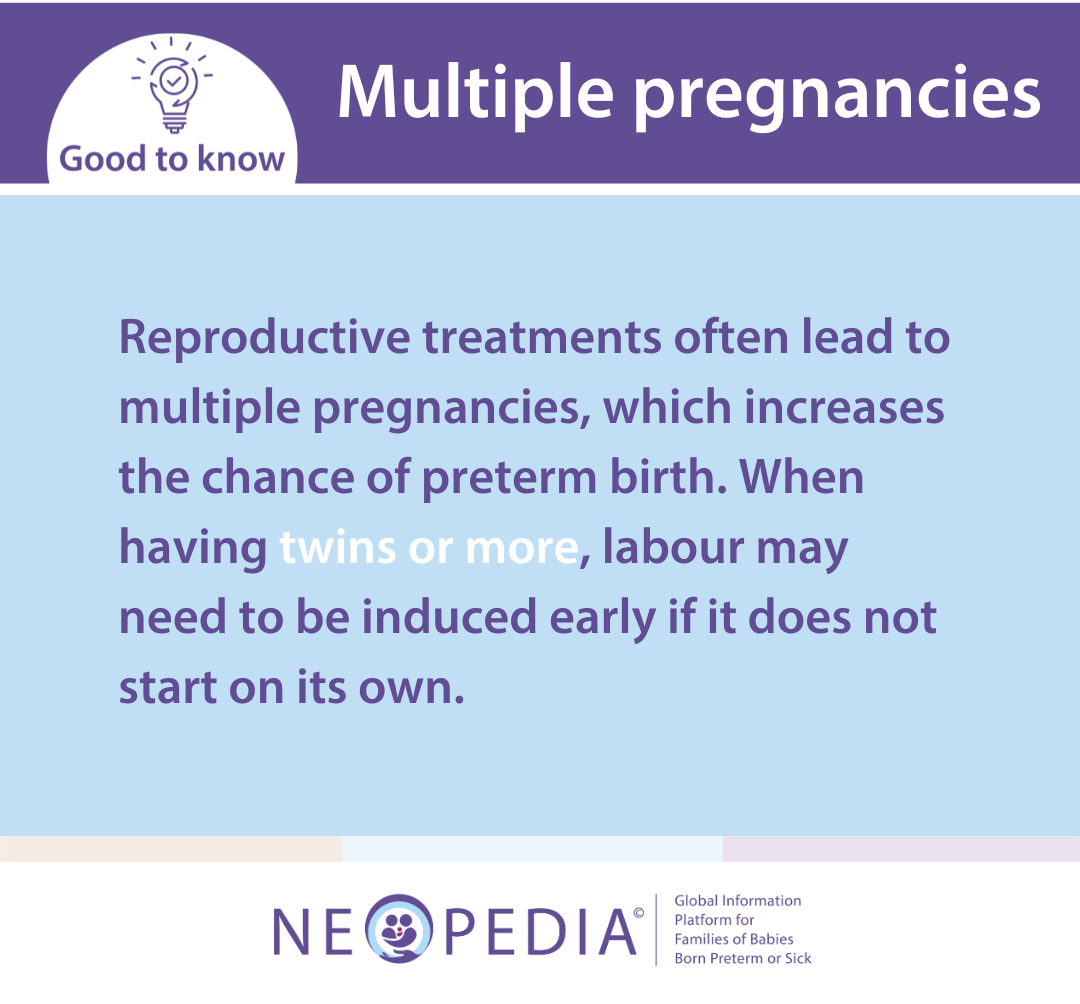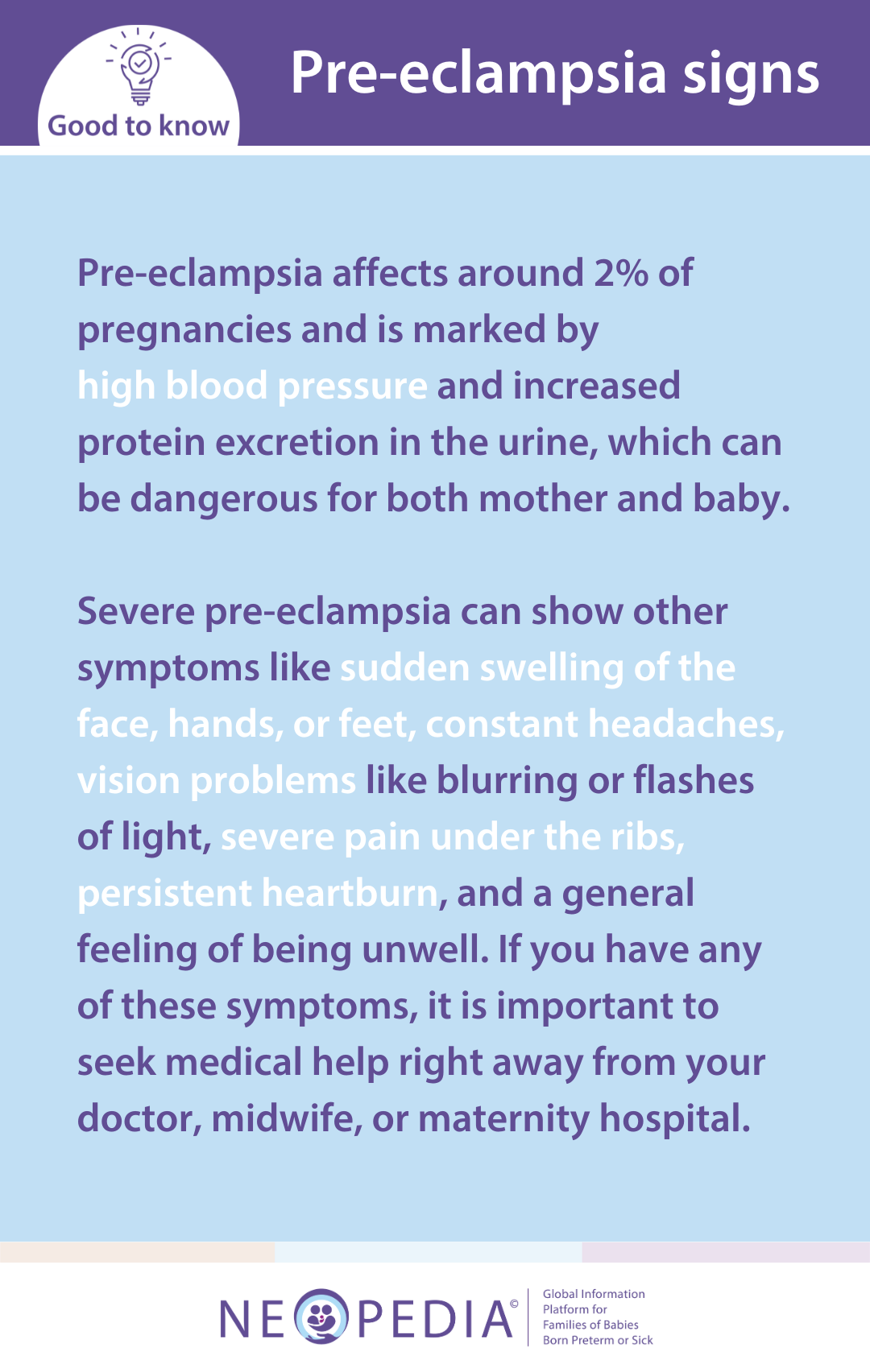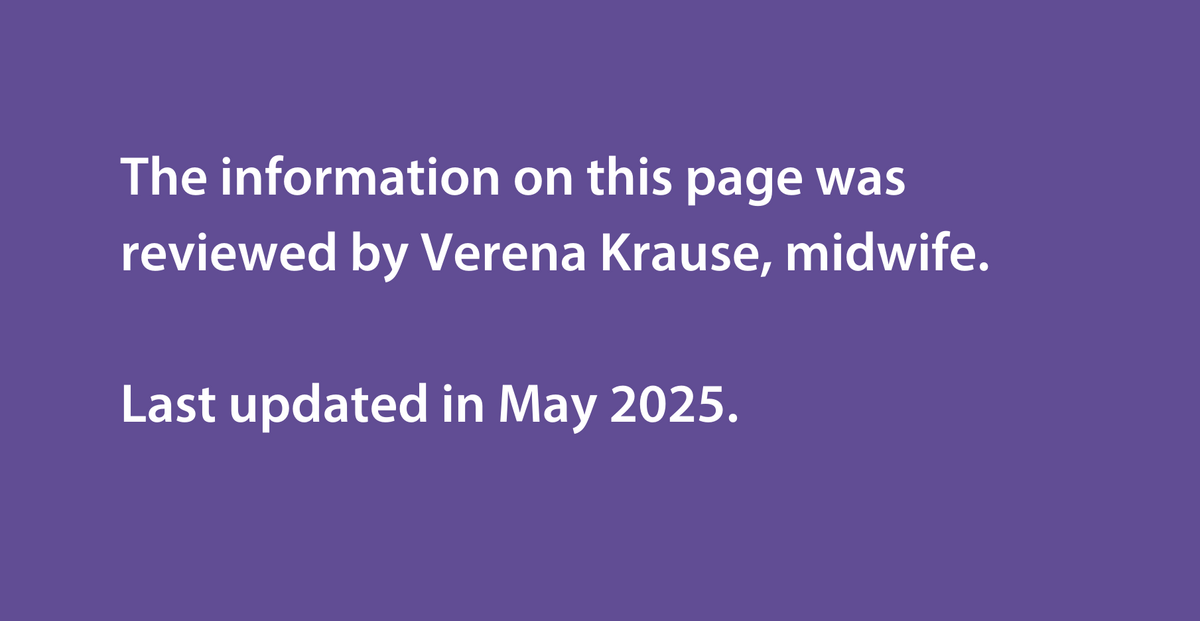
Before and during your pregnancy, it is important to be aware of certain medical conditions that could cause problems, including preterm birth. Some examples include genetic factors, multiple pregnancies, pre-eclampsia⍰, and issues with the uterus⍰ or cervix⍰.
By carefully considering your and your family’s medical history, your healthcare providers can give you personalized care. Finding and managing any issues that might affect your pregnancy early on can improve the chances of a healthy outcome for you and your baby.
Certain medical conditions, like having a rhesus negative blood type, diabetes⍰, kidney disease⍰, or high blood pressure⍰, can affect your baby’s development. Sometimes, these issues may lead to the decision to deliver the baby early.
Rhesus Negative Blood Group: People are classified as having either a positive or negative blood type based on the presence of a substance called the 'Rhesus factor'. If you are Rh-negative and your baby is Rh-positive, your body can make antibodies⍰ against the baby’s blood cells if their blood mixes with yours. This usually does not pose a problem during the first pregnancy, but these antibodies can become active in a future pregnancy with an Rh-positive baby and cause a condition called rhesus disease, which can affect the baby’s red blood cells.
Rhesus disease can be prevented with an injection of anti-D immunoglobulin. This injection is typically given after any event that might cause fetal blood to enter your bloodstream, such as labor or delivery, amniocentesis⍰, miscarriage⍰, or trauma. Blood tests during antenatal screenings will check your blood type and identify if this prevention is needed.
Diabetes: Babies born to mothers with diabetes or gestational diabetes⍰ are at a higher risk of being larger than average at birth and being born early. They are also more likely to develop type 2 diabetes⍰ later in life. Properly managing diabetes can help reduce the risk of complications.
Managing diabetes during pregnancy
Achieving optimal blood sugar⍰ control can help reduce complications associated with diabetes and gestational diabetes. Here are some key management options:
Lifestyle modifications:
Medical interventions:
By working closely with your healthcare team, these strategies can support a healthier pregnancy and reduce the risk of adverse outcomes for both you and your baby.
Kidney disease: Kidney problems during pregnancy can also increase the chance of preterm birth. Doctors check kidney function through urine tests that look for proteins; finding proteins in the urine can indicate that the kidneys are not filtering properly.
High blood pressure: This condition needs careful monitoring, as it can lead to serious issues like pre-eclampsia⍰ during pregnancy.
Certain genetic – meaning inherited – factors related to you and your baby are connected to the risk of preterm delivery. These factors include your own genes, which may affect your likelihood of having traits that could influence the outcome of your pregnancy. You can manage the risk from genetic factors by going to see your healthcare provider regularly.
Mothers who have had a preterm birth before are much more likely to have another preterm delivery than average. This is the biggest risk factor for having another preterm baby.

The use of Medically Assisted Reproduction (MAR)⍰ is increasing around the world for various reasons, such as genetic issues, health problems, and decreased fertility due to age.
Assisted Reproductive Technologies (ART) are methods that help people and couples get pregnant when they face difficulties, like infertility or genetic concerns. Examples include In-Vitro Fertilization (IVF)⍰ and Intracytoplasmic Sperm Injection (ICSI)⍰, which involve fertilizing egg cells with sperm cells outside the body.

Severe cases before 34 weeks are rare, but regular antenatal care is vital for early detection. If left untreated, pre-eclampsia can lead to serious complications like hemolysis, elevated liver enzymes, and low platelets (HELLP) syndrome⍰ (which affects the blood and liver) or eclampsia⍰, which can be life-threatening. For the mother, long-term effects include a higher risk of high blood pressure, kidney disease, and health complications relating to the heart, or even loss of life.
Risk factors include being pregnant for the first time, carrying multiple babies, having had pre-eclampsia before, older maternal age, and pre-existing conditions like high blood pressure and diabetes⍰. Screening between 11 and 14 weeks can assess the risk, and preventive steps like lifestyle changes and low-dose aspirin (100-150 mg) can be taken. Please always contact your healthcare provider and do not take aspirin without consulting them first. Blood tests in the later stages of pregnancy can predict or diagnose pre-eclampsia early, allowing care to be adjusted.
During your pregnancy, make sure to attend all prenatal appointments and monitor your blood pressure. Seek medical advice immediately if you notice symptoms like headaches or rapid weight gain. While the only cure for pre-eclampsia is delivery, the pregnancy can often be safely prolonged under close supervision.
Certain issues with the uterus⍰ and cervix⍰ can raise the risk of preterm birth. For example, a short cervix may lead to early labor because it can soften and shorten during pregnancy, potentially opening too soon. Cervical incompetence, where the cervix weakens and starts to open and thin out too early, can also cause preterm birth. In some cases, women with this condition may need a procedure called cerclage, which involves stitching the cervix closed temporarily.
Additionally, problems with the uterus can increase the risk of preterm labor⍰. This happens because such abnormalities can limit the baby’s growth and cause the uterus to stretch too early.
Placental abruption: This happens when the placenta⍰ separates from the uterus⍰ too early, often causing bleeding later in pregnancy. In serious cases, it can lead to problems for both the baby and mother. Risk factors include injuries to the uterus, multiple pregnancies, smoking, and high blood pressure⍰.
Placental accreta: Placenta accreta is a serious condition where the placenta grows too deeply into the uterine wall⍰, which can cause heavy bleeding after birth. Sometimes, the placenta can even grow into the uterine muscles or nearby organs, making it hard to detach after delivery.
Placental insufficiency: This condition occurs when the placenta does not provide enough nutrients to the baby, possibly leading to low birth weight and development issues. It can also cause stress for the baby and may require an early delivery. Risk factors include diabetes⍰, high blood pressure, and drug use. Regular ultrasounds⍰ help monitor the baby’s growth.
Placenta previa: Placenta previa happens when the placenta attaches near or over the cervix⍰, increasing the risk of bleeding during pregnancy. It can slow the baby's growth and lead to early delivery, usually by C-section. Women who have had placenta previa before are more likely to have early births in the future.
Infections in the uterus⍰, like urinary tract infections⍰ or bacterial vaginosis⍰, can cause health problems. It is important to tell your healthcare provider right away if you think you have a urinary tract infection to reduce this risk.
Good oral hygiene is important to prevent gum infections. Sexually transmitted diseases can also cause problems during pregnancy. Serious infections during mid to late pregnancy may sometimes lead to early labor, therefore it is very important to reach out to your healthcare provide in case you notice any signs.
Simple steps you can take:
It is recommended to receive or update all mandatory and recommended immunisations, such as chickenpox, measles, rubella, before planning your pregnancy. However, some are needed during pregnancy to protect you from certain diseases. This is especially true for vaccines like pertussis, RSV⍰, tetanus, diphtheria, polio, flu⍰, and COVID-19.
Always talk to your doctor about which vaccines you may need based on your history. You can feel safe getting these immunisations while pregnant, as research has shown no harm to babies.

